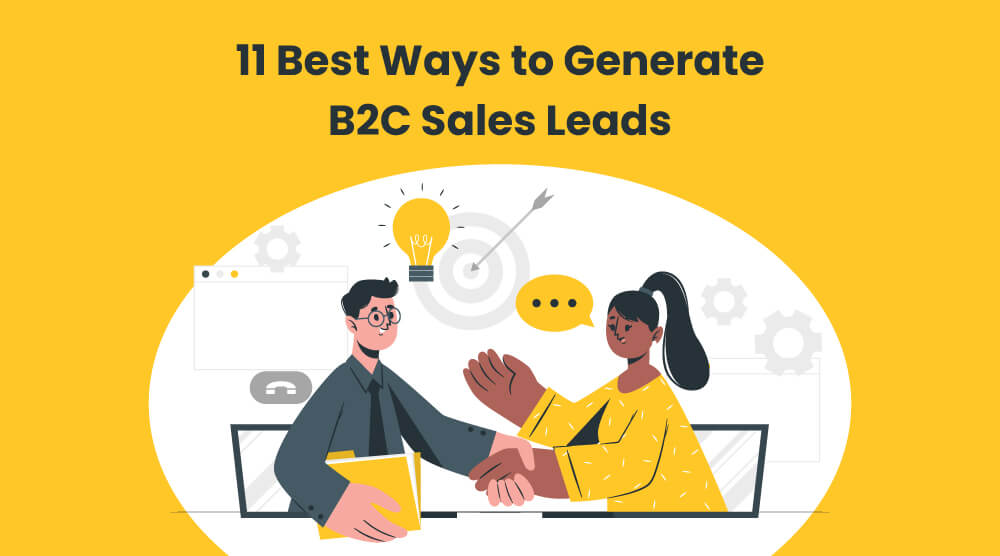If you rewind to the all-time classic – You’ve got mail, you will know why Meg Ryan was happy every time she got an email. Email was the new way to communicate, and felt as personal as letters, only much faster.
However, things have changed a lot since then. And now that we think about this movie, we can reminisce that there was a time when people found real joy in receiving emails.
Today, hundreds of unread emails become a cause for people’s anxiety and mismanaged time. Moreover, there is such bombardment of emails that people tend to leave them unread if they aren’t from people or companies they value.
Thus, brands need to make their emails relevant, timely, helpful, and delightful so that people find a real value in them.
Wouldn’t it be wonderful if your customers eagerly wait for your emails and click open as soon as they receive them?
It is possible through trigger-based or interest-based or activity-based email automation.
With the level of technology available today to marketers, emails can not only help engage customers but also educate and guide them towards reaching their goal on a business website. Email automation, if done well, is as good as one-on-one communication in terms of relevance.
So, let us dive into what is email marketing automation, but before, a quick look into the effectiveness of email marketing in today’s time.
Why do marketers prefer email marketing?
Almost 90% of sales and marketing people use emails for communication and promotion. The ROI (Return on Investment) from emails equals $32 for every dollar spent.
Also, consumers (including 73% of millennials) say that they prefer communication from brands via email.
There can be many different types of emails that marketers can send to existing and prospective customers. For instance, discount offer email, product launch, cart abandonment email, upsell email, weekly or monthly newsletters, or updates from the organization emails.
Details: What is email marketing?
Therefore, among all the forms of marketing, email marketing holds its position. But is emailing as simple as it sounds? Not really.
Back in the nineties, organizations used to employ professionals for responding to emails from customers.
But, as the scale of business grows, manually responding to each of the mail becomes tedious. Moreover, brands have also started using emails to share their stories with patrons, send discounts and offers, and more.
Now, looking from a customer’s perspective, irrelevant emails from brands (even if it is from their favorite brand) are a big turn off. It would hardly take a second for them to unsubscribe to your email or mark it spam.
Therefore, you need to be careful while sending emails to your customers. Remember, it is one-on-one communication, and you do not want your customer to lose interest in your brand, product, or services.
Automation is of great help to take care of all these concerns and communicate with customers effectively. Let us discuss this in detail.
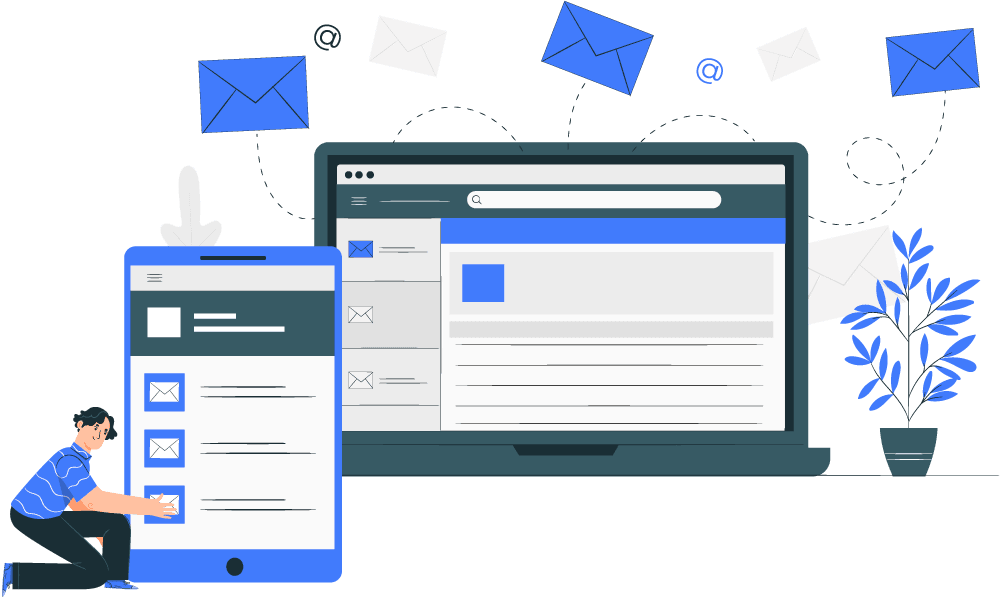
What is email marketing automation?
Email marketing automation is a process of drafting and scheduling email campaigns, sending automated emails based on triggers, monitoring the email metrics, and analyzing the email marketing outcomes.
In other words, with email marketing automation, you can create emails that reach the right people at the right time and with the right message without doing the work every time.
Marketers generally use CRM (Customer Relationship Management) software or marketing automation software for end-to-end email marketing automation.
Additional resource: How to set up email campaigns in LeadSquared CRM?
How is email automation different from batch emailing?
Email automation also corresponds to triggered emails. Triggered emails are the ones that marketers send after activity on your website, ad, or even on the previous emails. For example, if someone subscribes to your blog, then you can send an automated welcome email to the person instantly.
On the other hand, if you follow the batch emailing process, then you will have to collect the email contacts over weeks/months/quarter and send the mail to the new subscribers all at once. By default, every batch email is a broadcast email. That makes it prone to get spammed by email service providers.
On the other hand, the email automation platform keeps sending automated emails based on trigger activities. That is why email inbox filters do not spam them.
The components of email marketing automation
Email marketing automation can benefit everyone – from large enterprises to small businesses. It will not only personalize emails for your customers but also ensure timely delivery of the emails.
1. Ready-to-use email templates
As they say – a picture speaks a thousand words. Creative emails are much more attractive and have better CTR (click-through-rates). Plus, most people access emails on their mobiles. Mobile devices and smartphones account for 46% of all email opens. Therefore, you need to ensure that your emails are attractive and mobile responsive.
With automation in place, you need not ask your designers to design an email from scratch every time you want to launch an email campaign. Especially if you are working on a tight deadline, then having a ready-to-use email template will save a lot of your time.
Email automation suites provide mobile-responsive templates that you can easily modify within minutes by changing just content and imageries.
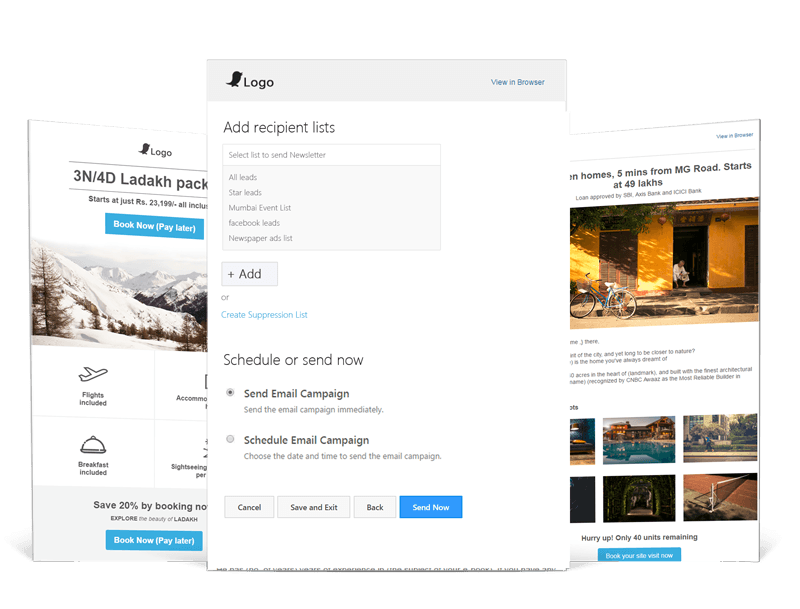
2. Dynamic emailing list
Would you like to update your email list manually every time a prospect/customer subscribes to an email?
Sounds tedious, right?
With automation, there is no need to keep updating the emailing list every time you find a new contact. Your CRM system can fetch the contact details from RSS, social media, blog, etc. and update the list automatically. Some systems also verify email ids before adding them to the list.
Moreover, based on attributes such as inquiry, product, support, etc., you can segment the contact into different buckets and accordingly send communications.
3. Email segmentation
Email segmentation is the process of categorizing the contacts into separate segments or categories based on predefined criteria. For example, you can segment your contacts as leads, customers, support queries, product queries, unsubscribes, invalid emails, to name some. In terms of the contacts’ attributes, you can categorize them based on age, location, gender, past purchases, etc.
After all, a man might not be as interested in a jewelry email as a woman.
Thus, segmenting the email recipients will help you send relevant communication. It also increases the engagement rate and reduces the number of unsubscribes due to irrelevant content. According to Campaign Monitor, marketers have seen an almost 760% increase in revenue from segmented email campaigns.
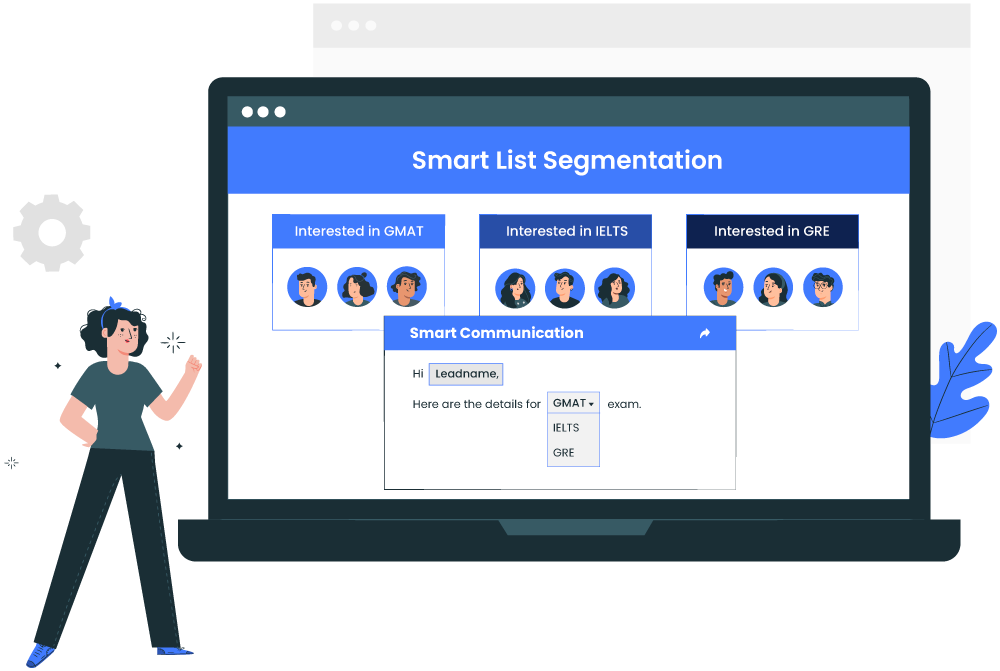
You can further segment the contacts based on their engagement with your previous emails. After all, an engaged customer is more likely to buy from you than a disengaged one.
Also, read in detail – what is email segmentation?
4. Personalization
Personalized emails increase open rates by nearly 328% and click rates by 543%. It gives the receiver a sense of importance.
Also, according to Conversant Media, 94% of marketing professionals say that personalization is essential for meeting their email marketing objectives.
With automation in email marketing, you can achieve personalization at scale. Here are the ways to personalize your emails.
- Add the recipient’s name in the subject line to increase the open rate
- Personalize the email content by addressing the receiver at least once.
The best thing is – you need not do it manually. You can create variable fields in your email copy. The software can then fetch the name from the email list and assign it to appropriate places. For example, look at Amazon’s action completion drip email campaign. It is relevant, direct, and personalized.
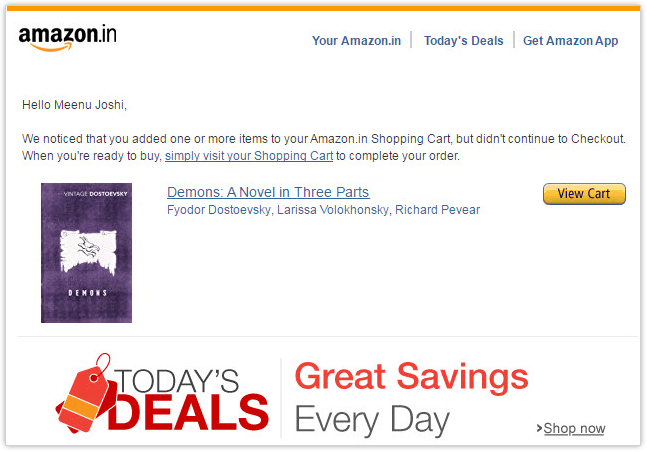
5. Email scheduler
Say if a product launch is on Christmas eve, you cannot just stay awake the whole night and wait till the product launch to press the send button.
When you have such a plan, then email schedulers in your automation suite can help. You can draft the email, select recipients, and schedule the email weeks or months before the actual event.
It will reduce your last-minute pressure to a great extent. If there is a change in the plan, you can always go back and edit the email draft.
6. Email autoresponder
Whether it is an e-commerce store or a knowledge magazine, people expect a response email whenever they try to contact you by providing their email.
For instance, 75% of people expect a welcome email while subscribing to a mailing list.
Such small communications can build a forever relationship with customers.
There can be different types of auto-response emails, such as:
- A thank you email for subscribing to the blog, purchasing a product/service
- Service update email such as your shipment is arriving, delay in delivery
- Support ticket emails such as you have received the query, and an executive will reach you within 48 hours.
Here’s an example of an automated welcome email from Hult International Business School.
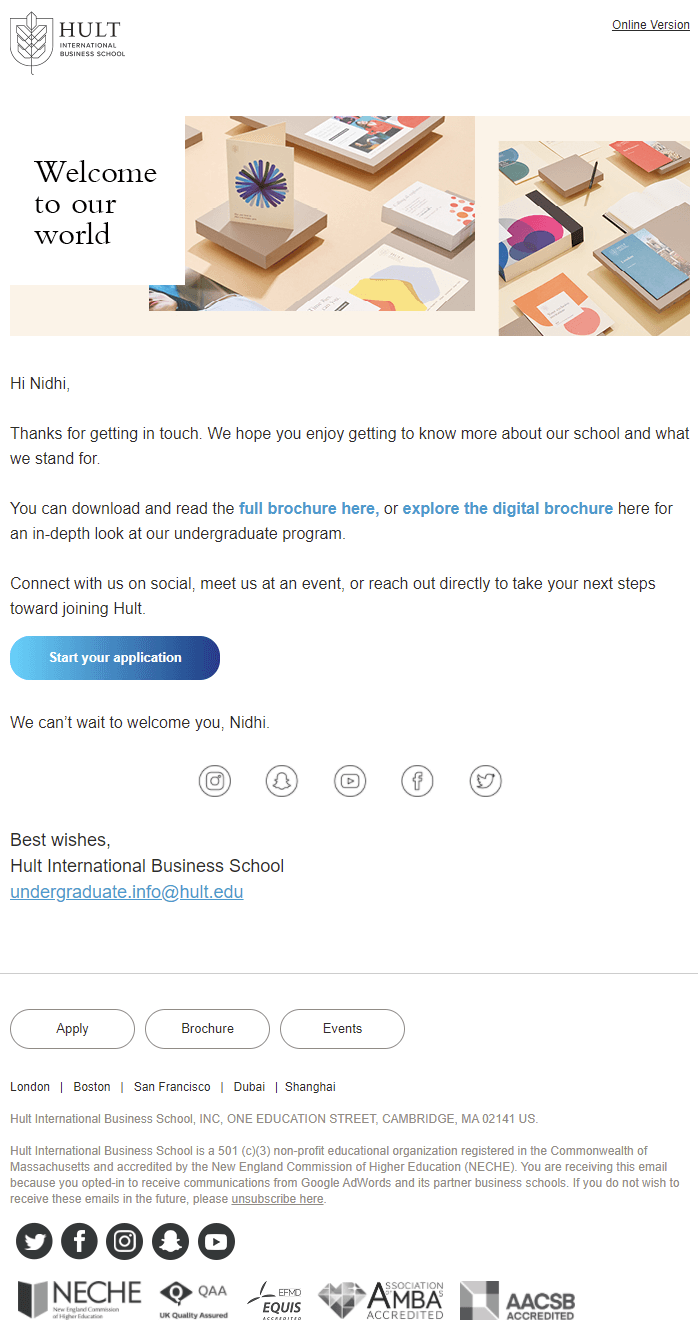
7. Trigger-based email campaigns
One of the key advantages of email marketing automation is trigger-based emails.
But what exactly are triggers?
Triggers are the activities of the email recipient that notify the system or your sales/marketing team members to take the next action.
For example, let us say, a customer has clicked on the view product link from your last product launch email campaign.
The system will register this action and trigger activity for you. In this case, the next task could be to send an exclusive discount offer to that customer on that particular product. The benefit is clear – instead of waiting for a team member to audit all the clicks, automation in email marketing can send an instant, personalized mail to the right recipient at the right time.
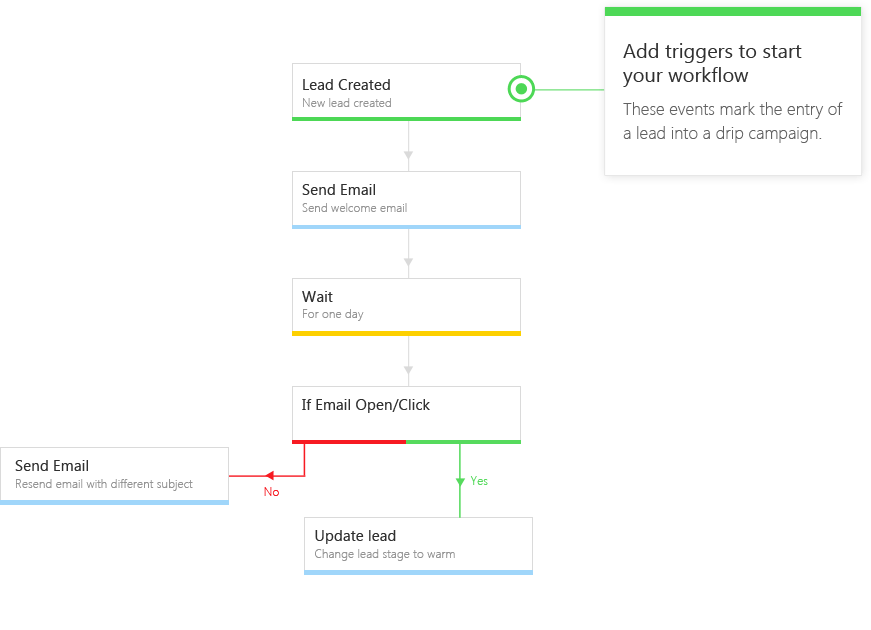
8. Email analytics
Everyone says that you should measure the effectiveness of your campaigns. But the truth is that people fail to keep a tab on campaign metrics for a long time. It is because pulling records, sorting, and filtering them on excel sheets is tedious. People lose track of the older campaigns also because it is tough to iterate the entire process for a minute change in campaign data.
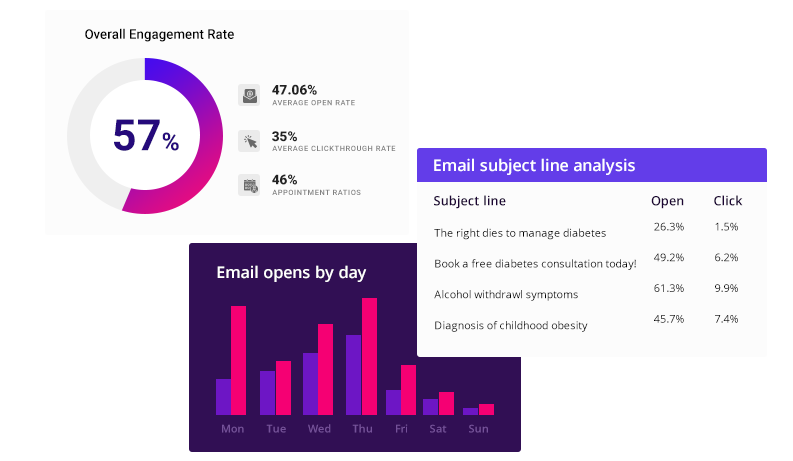
Email marketing automation software resolves such issues from its core. No matter if it is an old campaign or a new one, the system keeps a tab on the customers’ activities on your emails. The proven benefits of email analytics are:
- You need not hassle with excel sheets to generate reports
- Tracking is intact for older email campaigns as well
- In-depth tracking of key metrics
- Decision-ready insights for different user groups: managers, salespeople, marketers, management, and leadership
- Customizable report dashboards specific to individual users.
Also read: what should be there in your email marketing funnel?
Benefits of email marketing automation
As per VentureBeat, automated emails drive 180% higher conversion rates than batch emails.
In a nutshell, you can achieve the following benefits by using email marketing automation:
- Create and reuse branded email templates
- Create segmented email campaigns
- With CRM – email integration in place, it is easy to nurture leads
- Managing a vast emailing list is also simpler with email automation
- Create targeted marketing campaigns
- Re-engage with your passive clients
- Analyze and modify email campaigns conveniently.
Which is the best email marketing automation software?
Email automation is essential, but it is not the only thing that marketers and organizations need. While email marketing can generate leads and customers, you need a system to capture these leads, distribute it to your sales reps, nurture them, and track the leads throughout their lifecycle.
Therefore, to draw a complete picture, you will need:
- Either an email marketing automation software that integrates with your CRM system,
- Or a CRM software or marketing automation suite that also provides email automation functionality.
The best deal would be to invest in sales and marketing CRM software that also provides email marketing automation. It will not only automate your email campaigns but also streamline subsequent sales and marketing activities.
If you are looking for such solutions, you can try out LeadSquared CRM that provides email automation, lead journey tracking, and much more.
- 20 Best Cold Email Templates to Warm Their Inbox
- 15 Higher Education Email Templates to Boost Enrollments
- 20 Best Ready-to-use Email Templates for Real Estate
- How to Write Follow-up Emails After No Response [25 Ready-to-use Templates]
Email marketing automation FAQs
Automated emails are the pre-planned emails that you can send to your customers or subscribers at a specific time. These are also sent as a response to trigger activities, such as download case study, product purchase, payment success, delivery update, etc. You can also send automated emails individually or as a part of your drip campaigns.
Email automation can help you engage with customers, send an instant response, promote products or services, create brand or product awareness, and analyze and measure the effectiveness of your campaigns for future improvements.









